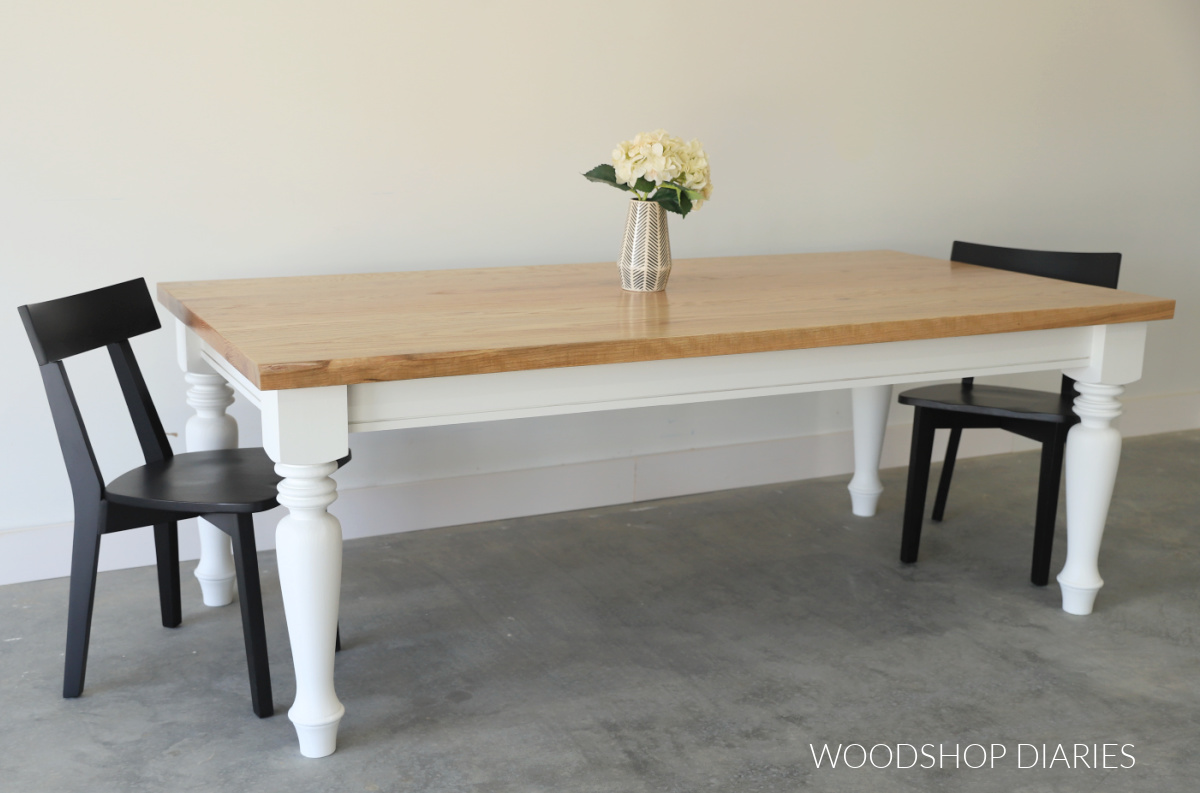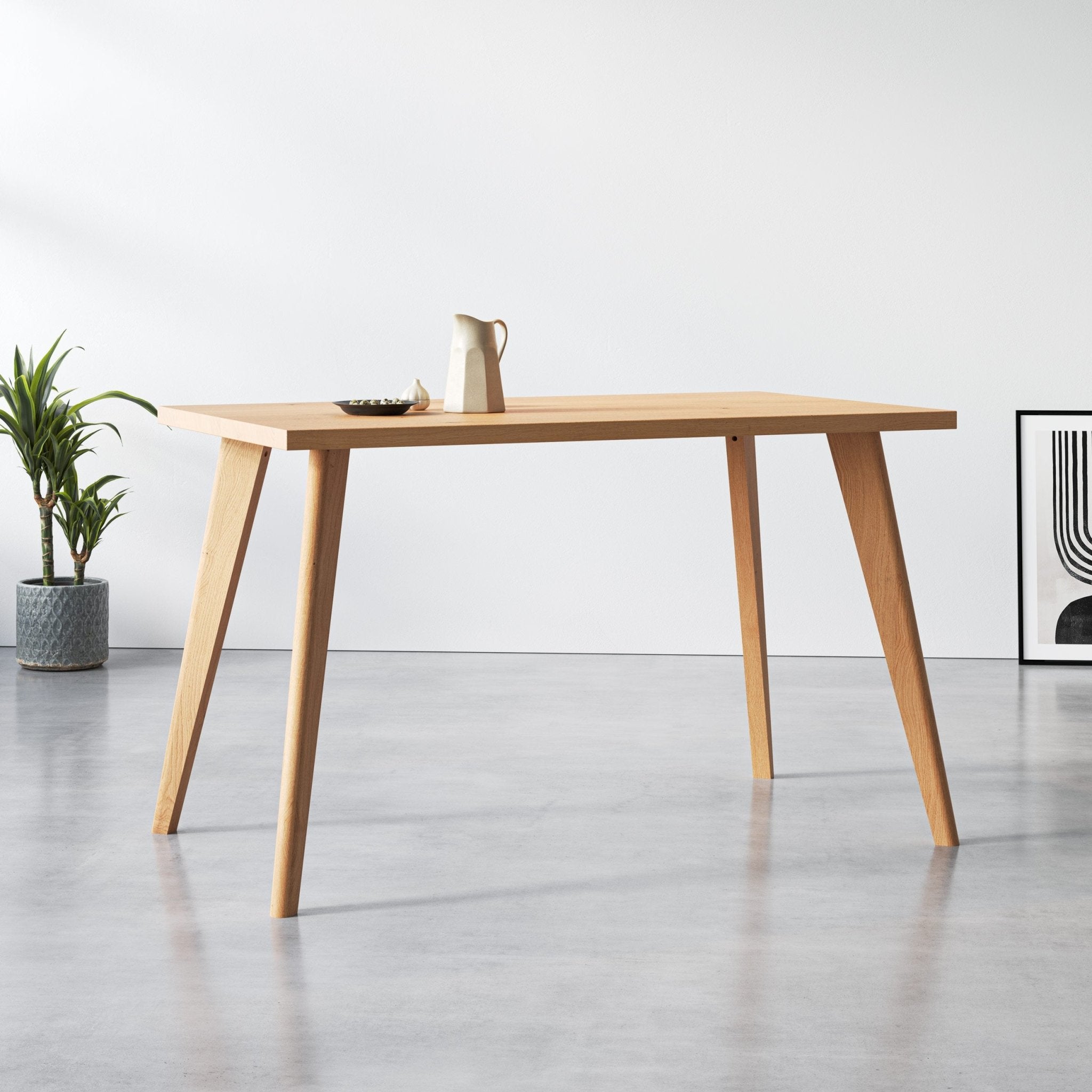Achieve Modern Beauty Making Use Of Sleek Dining Table Legs Wood Styles
Trick Factors to Remember for Table Legs Wood Choices
When choosing timber for eating table legs, several vital variables warrant careful factor to consider to make sure both performance and visual charm. The option of timber type, identified by its longevity and special grain patterns, plays a crucial duty in the overall design and long life of the item.
Timber Types and Features
When picking wood for eating table legs, it is necessary to comprehend the one-of-a-kind qualities of numerous timber types. Different timbers supply distinctive advantages and downsides, affecting both the toughness and visual appeal of the finished product.
Oak, understood for its remarkable sturdiness, likewise includes a noticeable grain that can include personality to the table. Cherry timber, with its abundant color that deepens over time, gives an elegant appearance yet might call for more maintenance to prevent scrapes.
On the other hand, softwoods like want and fir are much more affordable and easier to work with, yet they are much less resilient than woods. Pine is light-weight and features a warm, rustic look, making it a popular choice for informal eating settings. It is a lot more at risk to damages and scratches.
Understanding these features will certainly assist in making a notified decision to ensure the legs of the dining table meet both functional and visual needs.
Grain Patterns and Appearance
The timber's grain is not just a visual quality; it imparts an one-of-a-kind character and charm to each item. Different timber types show distinctive grain patterns, varying from the straight lines of maple to the intricate swirls of oak and the striking figure of walnut.
Furthermore, the alignment and scale of the grain can influence the viewed size and sophistication of the table. For example, larger, extra obvious grains may provide a strong, significant impact, while finer, subtler grains can create a fine-tuned, underrated appearance. Furthermore, the completing process can further enhance these patterns, emphasizing the natural charm of the wood and highlighting rich hues.
Ultimately, the option of grain pattern must integrate with other layout components, such as the table top and bordering furniture, making certain a cohesive visual that elevates the dining experience. Thoughtful option of wood grain not just contributes to the table's beauty yet additionally mirrors the proprietor's preference and design.
Sturdiness and Toughness
The sturdiness and toughness of table legs are paramount factors to consider for making certain durability and stability in any dining space. Selecting the best wood is important, as various types show differing levels of resilience. Woods such as cherry, maple, and oak are usually liked for their intrinsic strength and resistance to put on. These products not only hold up against daily usage yet additionally support hefty tons, making them perfect for dining tables that often fit numerous diners. Dining Table Legs Wood.

Ultimately, spending in high-quality wood and durable construction approaches will generate a dining table that stands the examination of time, while giving a dependable structure for plenty of dishes shared amongst friends and family. Prioritizing durability and stamina guarantees that your table remains useful and cosmetically pleasing for several years to come.
Maintenance and Treatment
Appropriate maintenance and care are crucial for maintaining the longevity and strength of table legs made from wood. Normal cleaning is crucial; using a soft, moist towel makes sure that dust and debris do not collect, which can bring site about scrapes and monotony. It is suggested to prevent harsh chemicals or unpleasant materials that might damage the coating.
In addition, using a suitable timber polish or wax occasionally can assist preserve the sheen and shield the timber from dampness and spills. It is critical to follow the producer's referrals concerning the type of item to use, as particular coatings might react negatively to particular chemicals.
Moisture and temperature level variations can also affect wooden table legs, triggering them to warp or fracture. It's finest to position the table far from direct sunshine and heat sources. If the table legs have any scrapes or dents, addressing these without delay can protect against further damage.
Finally, occasionally checking the joints and screws for rigidity is very important to keep architectural stability (Dining Table Legs Wood). By adhering to these upkeep practices, property owners can ensure their wood eating table legs remain useful and attractive for many years to come
Ecological Considerations
When selecting wood for dining table legs, it's necessary to take ecological factors to consider right into account. The sourcing and sustainability of wood are vital in decreasing environmental influence. Choosing wood from licensed resources, such as those endorsed by the Forest Stewardship Council (FSC), guarantees that the lumber is collected responsibly, promoting woodland conservation and biodiversity.

In addition, regional sourcing of timber reduces transportation emissions, sustaining local economic situations while reducing ecological effect. It is additionally advisable to be knowledgeable about the timber's treatment and finishing processes, as specific chemicals can be dangerous to both human health and wellness and the atmosphere. By prioritizing lasting wood choices, consumers can add to environmental conservation while taking pleasure in the sturdiness and elegance of their table legs.
Final Thought
In final thought, choosing wood for dining table legs requires mindful factor to consider of various variables, consisting of timber kinds, grain patterns, and longevity. The visual appeal of unique grain patterns can boost the overall layout, while the toughness additional info of woods makes certain durability. Upkeep requirements and environmental sustainability further influence wood selections, emphasizing the importance of sourcing from accredited or reclaimed materials. A notified selection process ultimately adds to a aesthetically attractive and useful eating room that straightens with sustainable methods.
When picking timber for eating table legs, several important factors call for cautious factor to consider to make certain both functionality and visual charm.Proper upkeep and care are crucial for preserving the sturdiness and toughness of eating table legs made from wood.When picking wood for dining table legs, it's vital to take ecological factors to consider into account. By prioritizing sustainable wood choices, consumers can add to ecological preservation while delighting in the sturdiness and elegance of their dining table legs.
In final thought, selecting timber for dining table legs necessitates careful consideration of various aspects, consisting of timber kinds, grain patterns, and toughness. visit this web-site Dining Table Legs Wood.